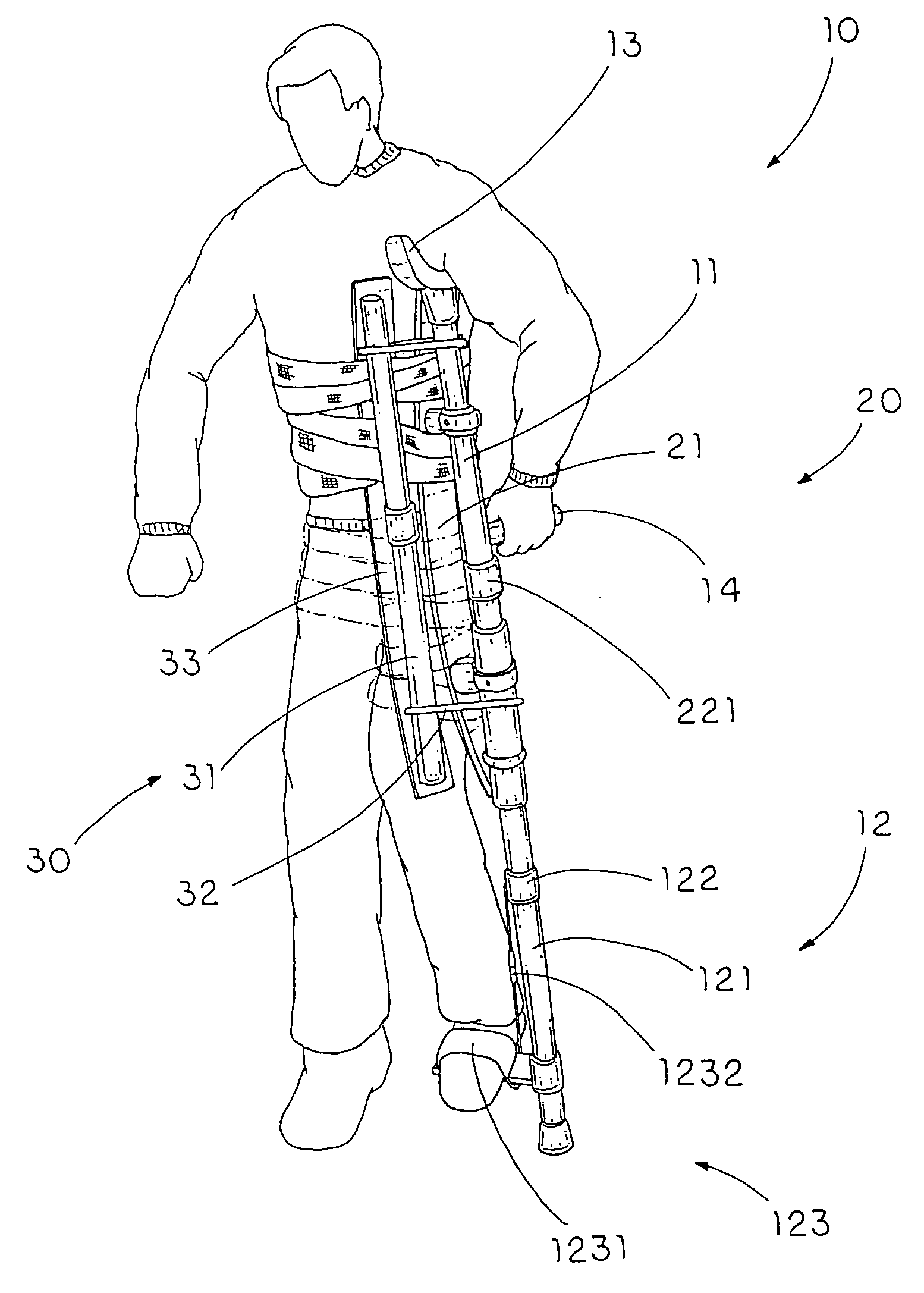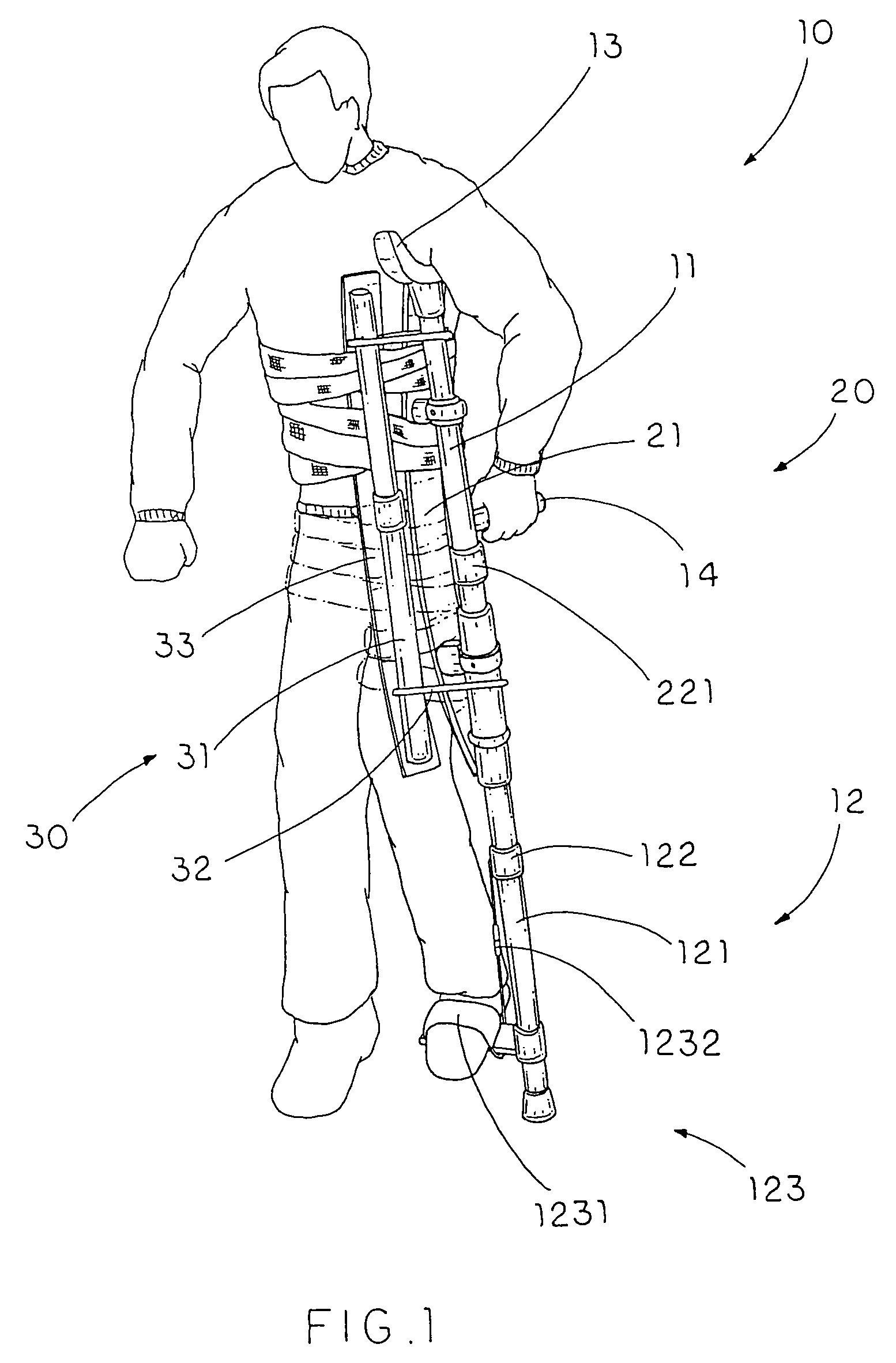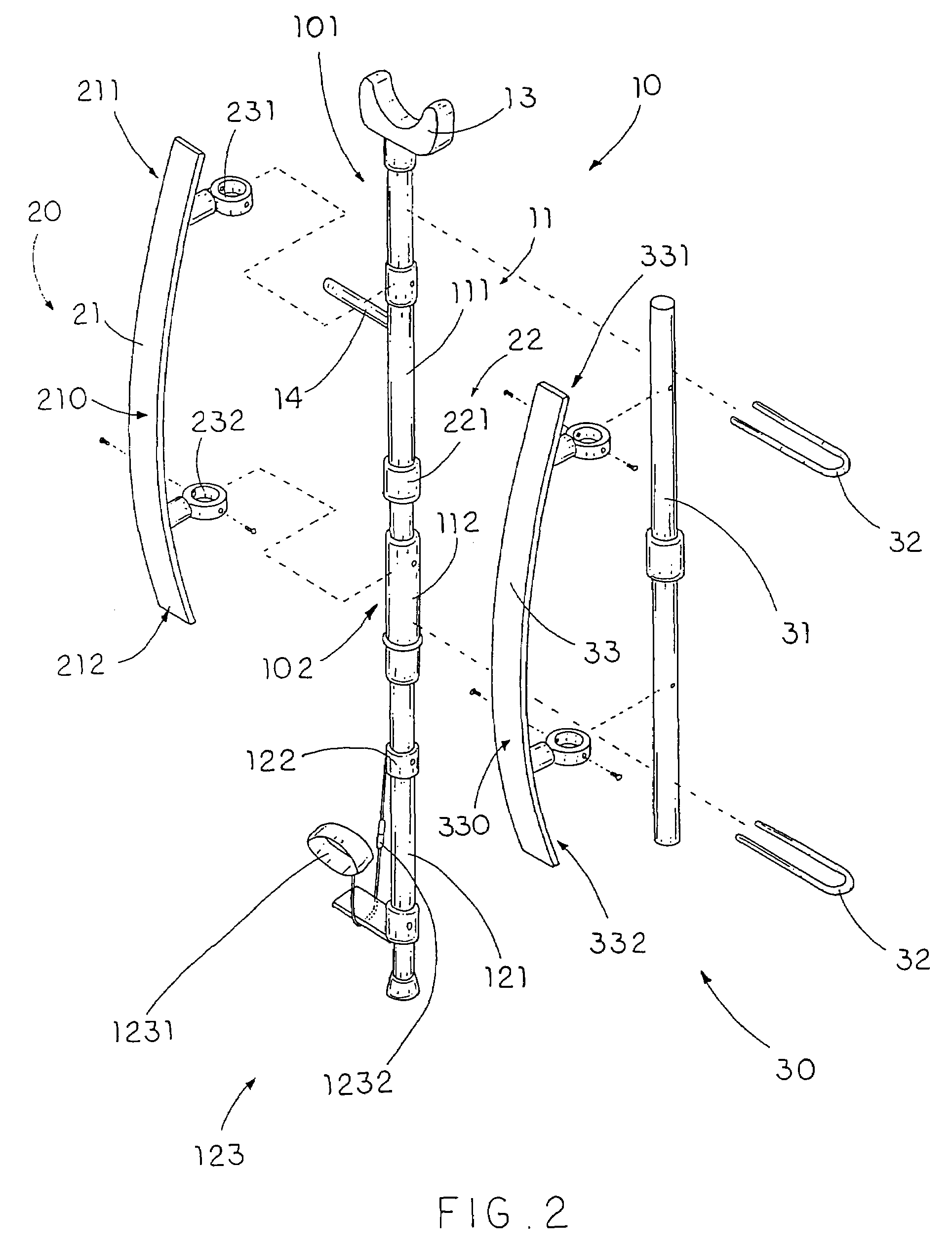Ambulatory hip fixation-traction splint frame
a hip fixation and hip technology, applied in the field of splints, can solve the problems of inconvenient and complicated stuffs, inferior fixation, failure of functional fixation, etc., and achieve the effect of enhancing the recovery of the fracture area
- Summary
- Abstract
- Description
- Claims
- Application Information
AI Technical Summary
Benefits of technology
Problems solved by technology
Method used
Image
Examples
Embodiment Construction
[0046]Referring to FIGS. 1 through 3 of the drawings, an ambulatory hip fixation-traction splint frame for a treated patient according to a preferred embodiment of the present invention is illustrated, wherein the ambulatory hip fixation-traction splint comprises is capable of retaining a treated patient having a fraction area at the side body thereof, such as rib fraction, waist fraction, or hip fraction, at a fixation position.
[0047]The ambulatory hip fixation-traction splint frame comprises a supporting frame 10 having an upper end 101 arranged for positioning below an armpit of the treated patient and a lower end 102 extending to position below a hip portion of the treated patient. The position below a hip portion includes a position below a heel.
[0048]The ambulatory hip fixation-traction splint frame further comprises a side splint assembly 20 comprising a flexible guiding frame 21 having first and second end portions 211, 212 mounted to the supporting frame 10 wherein the guid...
PUM
 Login to View More
Login to View More Abstract
Description
Claims
Application Information
 Login to View More
Login to View More - R&D
- Intellectual Property
- Life Sciences
- Materials
- Tech Scout
- Unparalleled Data Quality
- Higher Quality Content
- 60% Fewer Hallucinations
Browse by: Latest US Patents, China's latest patents, Technical Efficacy Thesaurus, Application Domain, Technology Topic, Popular Technical Reports.
© 2025 PatSnap. All rights reserved.Legal|Privacy policy|Modern Slavery Act Transparency Statement|Sitemap|About US| Contact US: help@patsnap.com



